Views 43,831
Etymotic ER4-XR – Precision, Performance, Power
Etymotic extended its range of products with the newly released ER4-XR (Extended Response IEMs). They promise to bring a few improvements to the well-renown ER4 series, leading to a new experience!
Introduction
Etymotic has been known for a long time throughout the audiophile community for their extreme precision in sound, creating IEMs for both musical professionals and music lovers. The latest Etymtoic ER4-XR is made for musicians. Etymotic are known to have refined the BA (Balanced Armature) technology to a state of art, and they are also known throughout the musician/composer communities for providing high quality tools for both recording and performance.
While BA drivers are nowadays found in thousands of products, Etymotic employs an entirely unique approach. They rely on a single BA driver enclosed within a tiny enclosure, along with a very deep insertion depth, ensuring both a tight fit and extreme levels of isolation from the outside noise. This makes them a great companion for both musicians and music lovers, the sound being one that is unique to their line of products.
I have absolutely no affiliation with Etymotic research, I am not receiving any incentive for this review or to sweeten things out. This review will be as objective as possible and it reflects my personal experience with Etymotic ER4-XR. Every opinion expressed is mine and I stand by it, the purpose of this review is to help those interested in ER4-XR find their next music companion.
First Impression
I never owned a deep-insertion fit IEM, nor an Etymotic IEM before, but I’ve heard stories and read reviews about the great things they managed to achieve through the years, so I became quite curious to hear one. Sadly, at the moment there is no official Etymotic reseller in Romania, so I contacted Etymotic directly to get a pair of their ER4-XR IEMs. They have been quite friendly and they managed to answer quite a few of my questions. By this time, I heard a few BA IEMs already, but I still had a few questions about this model in particular. Etymotic has answered all questions quickly and it is easy to tell that they also have a very solid warranty and service, providing an excellent service all around.
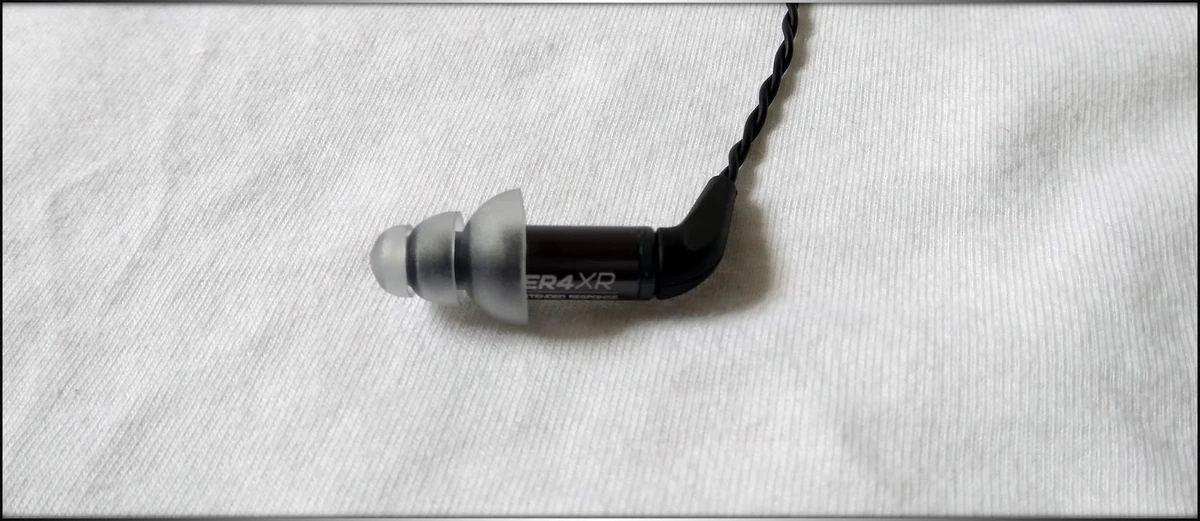
I have owned quite a few IEMs and headphones before, Ultrasone DJ One Pro, Meze 99 Classics, Ultrasone Signature Studio, Dunu DK-3001, Sennheiser ie800, HiFiMAN RE-2000, Oriveti New Primacy, Kinera H3, and a few others. I also owned high end sources like DAPs (Opus #3, iBasso DX200, Opus #2), and high end DAC/AMPs (iFi iDSD Black Label).
When it comes to receiving ER4-XR, I actually received ER4-XR suddenly. This has been one of the very few IEMs that I didn’t track, I didn’t know when to expect, and it arrived much faster than I’d have guessed.
It was a torrid summer day and I was just waking up from a rather restless sleep, when I noticed a missed call from an unknown number. I didn’t know who called or why, so I quickly washed my face and called back to see what was going on. The person on the other end told me that they have a package for me and asked me when and where we can meet. We agreed to meet in a few minutes outside of my place, since they were still in the area.
I left my room and went ahead to pick up the package, since it really piqued my curiosity. The driver handled me a box, nicely packaged and labeled, and the delivery process only took a few minutes. Although I got home quickly, I only got to have a proper listen to ER4-XR a bit later as I had a lot of work to do that day.
It was a lonely evening, and I was playing some games, relaxing after a day of work, when I noticed ER4-XR smiling at me from my desk. I thought that it is the right moment to give them a try and I plugged them in without a second though. The first thing I heard was the amazing soundtrack of the game I was playing. Since before plugging them in, I was using my laptop’s speakers, it was an amazing explosion of details and intrigue when I first heard that game’s soundtrack with ER4-XR. I had to stop from playing for a few minutes, just to listen to this new experience, to truly feel like I am within the world of that game.
Packaging:
First things first, let’s get the packaging out of the way:
– Foam tips
– 3.5 to 6.3mm Adapter
– Shirt Clip
– 3-Flange tips
– Filter replacements, and the tools necessary to perform the replacement.
– ER4-XR units
– Detachable cables
– Storage hard carrying case
The manual also includes instructions on how to properly fit the tips, and how to properly insert ER4-XR to achieve best fit with them.
Technical Specifications
Impedance | 45 Ohm |
Connector | 3.5mm / 6.3 mm |
Frequency Response | 20 Hz – 16.000Hz |
Rated Power Efficiency | 98 dB / 0.1V |
Maximum SPL | 122 dB |
Cable length | 150 cm / 3.5mm Jack |
Driver Type | BA, Ultra Isolation |
Coupling Type | In-Ear, Deep Insertion Fit |
Headphone to cable
connector type | MMCX |
Made in USA | Yes |
Low Magnetic Emissions | Yes |
Build Quality/Aesthetics
ER4-XR is an IEM that fascinates and intrigues at first sight as they look more like precision instruments rather than In-ear Monitors. Being almost the only IEM I have or had with a triple flanged tip, and coming with those tips by default, they look (and feel) different from most IEMs out there. The bodies of the IEMs are very supple, but very well build, the IEM enclosure being made out of metal. The cable connectors are quite snug, but they aren’t impossible to disconnect. There is a good sense of wonder and elegance with ER4-XR’s body.
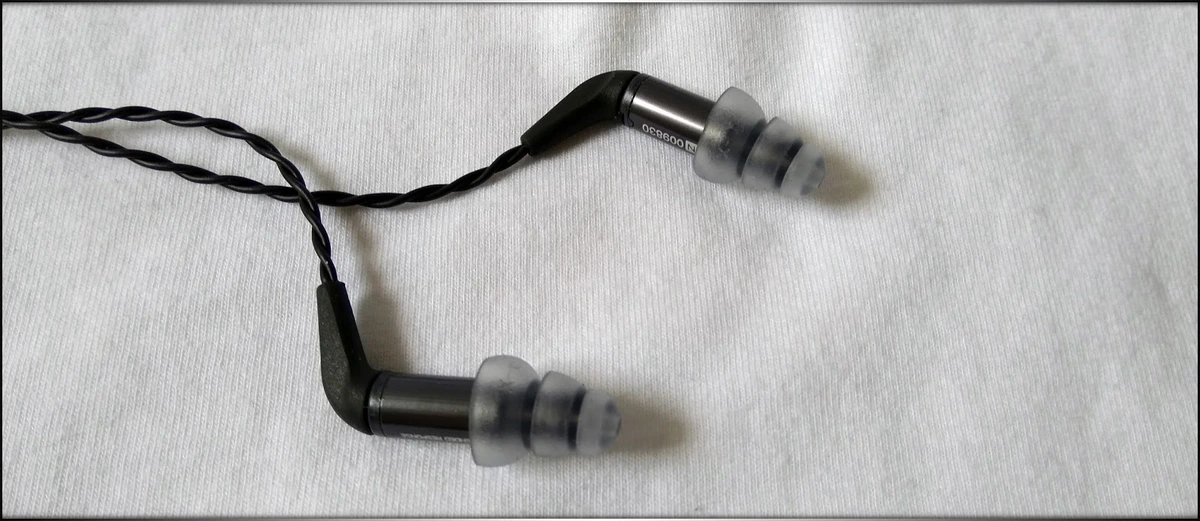
The serial number of each piece is etched on its body, and the color of the body is a dreamy dark violet. The connectors make a soft L-shaped turn, and continue with a supple, rubbery braided cable. The bore is very small, and longer than it is with most IEMs I tested to date, ER4-XR being the first IEM I test to have deep insertion. The cable becomes a bit thicker under the Y-split, but Etymotic included a shirt clip, in case the cable feels heavy, or in case the user moves a lot while wearing ER4-XR (for example, during a live performance).
The carrying case is made out of a textile material, with a very soft texture, with the name Etymotic written on it. The zipper feels and acts solid and fairly smooth, and the inside does an amazing job at protecting ER4-XR, and at allowing enough space for keeping your favorite DAP within (the case works just fine with Opus #3, Opus #2, iBasso DX200, FiiO X5ii, Shanling M2s and with AP200 from Hidizs)
All in all, ER4-XR provides a very solid build quality, and a technical, yet elegant appearance, being on the edge between a technical instrument and an elegant device made to listen music with.
Fit / Comfort
Etymotic ER4-XR is a deep-fitting IEM and this influences the fit / comfort a lot when using them. The first time I placed them in my ears, I was under a bit of surprise as I wasn’t used to this type of feeling. You know that they are there, and you can feel that they aren’t open back, but after about five minutes, the ear accommodates to them and they become really comfortable. Most of the IEM’s body disappears while it is placed in one’s ears, ER4-XR looking far more elegant when worn than while it is placed on a table. I haven’t lost the seal once with them, but it is good to mention that you shouldn’t just pull ER4-XR out of your ears, and they should be both inserted and taken out slowly and with care.
Everyone has a unique ear shape, and deep fitting IEMs can potentially cause more problems than shallow fitting ones, but ER4-XR’s tips are fairly soft and while they can look large in photos, they are pretty small in reality and shouldn’t cause problems for most people.
During my walks through the lonely streets of Bucharest, I haven’t lost the seal once with ER4-XR, they just sat there after being inserted, and there was no problem wearing them.
The upper part of the cables is slightly microphonic, especially since ER4-XR is supposed to be worn straight down, but bringing the chip separator up will help solve this problem entirely.
Testing
Etymotic ER4-XR has been tested with Xiaomi Mi Max 2, FiiO X5ii, Opus #3, Opus #2, iBasso DX200, Hidizs AP200, Shanling M2s, and with the benchmark DAC/AMP we have, iFi iDSD Black Label.
ER4-XR is very revealing and they will react to changes in source, but due to their rather high impedance, they are less sensitive to source changes than other IEMs, like ie800. Usage of a high-end DAP (Digital Audio Player) is advised for best results, but in all fairness, ER4-XR can be driven well from a portable source like a smartphone. It should be noted that due to their rather high impedance and rather low efficiency, they might require a bit more power than most IEMs out there, but they are still within the realms of IEMs and are still meant to be portable.
Sound Quaity
ER4-XR has a unique signature that is quite different from most IEMs and headphones out there. Instead of going for something like a bassy signature, or a U/V shaped signature, ER4-XR goes for a fairly mid-centric signature (some might say neutral even), with a very forward and revealing midrange, neutral yet very tight and precise bass, and a rather smooth and non-fatiguing top end.
If one wants to describe ER4-XR in a few words, those would be mid-centric, detailed, tight, ultra-isolating and smooth.
With the rain of details that ER4-XR brings, it feels like it has been designed more like a precision tool rather than a IEM, but I find them to be fairly musical and enjoyable, especially with music that might otherwise sound harsh, and with guitar solos.
Equalizing ER4-XR
I am an amateur of V-shaped / U-shaped sounds. Adding a bit of treble, and a bit of bass to ER4-XR is advised if you’re looking for a more “fun” signature rather than a reference one. ER4-XR has an excellent natural sound by itself, but with metal music, adding a bit of treble and a bit of bass might make one feel more engaged with the music, the main EQ profile I’m using being one that adds +7dB at 16 kHz, +3 dB at 10 kHz, +3dB at 100Hz, +3dB at 63 Hz, and +7 dB at 33 Hz. This way, ER4-XR sounds much closer to my personal ideal signature, being more energetic in the treble and having a larger bass, yet never losing their precision and utmost mid detail.
Channel balance
Not only ER4-XR has a very well-matched loudness between its left and right sides, but Etymotic also tests them for channel matching and they include a result of the test with every ER4-XR.
Bass
The bass of ER4-XR is deep, very deep, but tight, precise and solid. The precision of the whole sound is also present in bass, ER4-XR rendering even the finest textures with utmost precision and delicacy. Even so, the sound doesn’t lack depth and impact, the bass is there when it is asked for. The forward midrange might give the impression of a bass-light IEM, especially if one is accustomed to bass-heavy signatures, a little bit of EQ helping greatly with this issue.
It is not my place to question whether one wants to hear the absolute best precision out there, or if one wants to indulge in flows of explosive bass, being a little bit of a bass-head myself, but it is fair to notice that ER4-XR responds very well to EQ, the bass doesn’t distort and it doesn’t slow down, even with a lot of it added by EQ.
The Glitch Mob feat. Aja Volkman – Our Demons – There is a nice and impactful start for the song, the cymbals are clear and smooth, while bass notes are played quickly and placed with great care right pace. The voices bear amazing naturalness and texture. All symbols and small changes are easy to notice, and there is an amazing sense of space with every note that is played. The bass is always very deep, but it is also extremely fast, being precise rather than enhanced. The whole song feels vivid and lively, although adding a few dB in the treble and bass by enabling an EQ profile helps bring a bit more spark to the treble. In moments like this I feel that maybe ER4-XR is what would be a truly neutral sound, and I am just into V/U shaped signatures and I can’t let go of those. The story of the song is vivid, and one can feel that he travels through eternities of space of energy while listening to this song using ER4-XR. Every single detail is rendered, every small discrepancy and every small piece comes together with the rest to bring forward an awesome experience for the listener.
Gorillaz – Feel Good Inc – The song starts with a great few bass notes accompanied by clear and lively guitar tones. The cymbals sound rather subdued and smooth, and the soundstage feels pretty big, especially considering the size of ER4-XR. There is an amazing sense of detail and life with ER4-XR. Adding a bit of EQ to the mix will make the sound far more sparkly, keeping the tight, musical and detailed element, but bringing more realism to the cymbals and pushing the mids a little less forward, feeling more natural to those ears. The story of the song, of the lost lovers, is expressed very nicely, the melodic guitar notes combining amazingly well with the synth notes and the voices.
Thousand Foot Krutch – the Flame in All of Us – The song starts with good impact, and the guitar notes are woven nicely with the cymbal notes and with each other. The voices feel natural, and there is a good sense of space to the whole sound. The high level of details helps understand the work of TFK much better. All stringed instruments are audible during the bridges of the song, and there is a good sense of emotional attachment and impact to each word. The story of the flame that burns in everyone is sent vividly, and it is easy to start singing along and to move one’s head to the beautiful rock composition sang by TFK.
Midrange
The Midrange of ER4-XR is where things get interesting because it might be a very polarizing aspect of ER4-XR. Without any EQ, it sounds very forward, but on paper, it looks like it is just neutral. Most IEMs and headphones will have their midrange recessed, at least a bit, so ER4-XR will feel fairly forward by comparison. This will also have an impact on the stage, because with a very forward mid-range, ER4-XR doesn’t have a very expansive soundstage, but will feel rather intimate, a bit of EQ helping immensely with this.
Certain sources are quite good at painting a larger soundstage, for example Shanling M2s works really well with ER4-XR, the synergy between the two making the midrange sweet and musical.
Higher End DAPs like iBasso DX200 or Opus #2 will further enhance ER4-XR’s revealing abilities, music becoming even more vivid and coming through with even more details and fine subtleties but nevertheless, ER4-XR sounds amazing driven even from an ultra-portable DAP like M2s.
Connecting ER4-XR to iDSD BL yields amazing results as iDSD BL has a 3D enhancement option which comes in quite handy for powering up ER4-XR’s top end, giving them more energy, and increasing the width of the soundstage, providing a more realistic and well-rounded sound.
Skillet – The Resistance – The song starts strong and with a great presentation of the guitars played along the other instruments. The voices bear amazing detail and emotion to them, the bass effects and synth keys being played nice and lively. The top end is smooth and presented friendly, most cymbal hits being somewhat of a recessed sound, but still bearing good details. The story of the ones who keep resisting is touching while listening to The Resistance through ER4-XR, the listener easily getting the “goose bumps”.
Set It Off – I’ll Sleep When I Am Dead – The song starts with a tense and intriguing build-up, the bass notes being woven nicely with the voices and the guitars. The keys and effects are played pretty forward and the cymbals, while subdued by the smooth nature of ER4-XR, are played with good detail and have enough space to breathe. It should be noted that ER4-XR has an intimate presentation with this song, and although there is a fair sense of separation between the instruments, the soundstage is rather intimate. The story of the insomniac, who knows that he’ll sleep only after he died is presented nicely and bears good impact on the listener.
Rings of Saturn – Peeling Arteries – The song starts with a clear and crispy impact and playthrough of fast drum beats and patterns woven with the crazy fast guitar notes. The voices are as they should be, bearing good impact and force, but staying bellow the limit of harshness and absolute aggressiveness. It is really nice to hear how multiple guitar layers are played at the same time without much issue and how they are presented in a clear yet musical manner. When it comes to the story, Rings of Saturn tends to have pretty morbid and dark stories, ER4-XR’s smooth top end actually making the story sound less dark and less menacing when compared to a more energetic presentation.
Treble
The treble of ER4-XR is clearly a smoother treble, and even though the midrange, treble and bass of ER4-XR have extremely good detail retrieval and presentation, the top end is smooth, and I honestly feel that ER4-XR needs a bit of treble enhancement to sound natural / to sound more energic. Something like adding 7-11 dB on the last slider of most EQ found in most apps will make the treble much more energetic and balance out the forward midrange of ER4-XR, and although this might change the tonality of ER4-XR’s mids, I feel that it changes the mids for the better, providing a bit more bite and sparkle all around, the sound becoming more engaging and aggressive this way. Since my listening habits revolve heavily around Rock, Metal and aggressive music in general, I think that people who enjoy a smoother kind of music will find ER4-XR very good in their default state, without any EQ.
By default, the cymbals have a soft and friendly presentation with ER4-XR, and one can listen to music that is usually aggressive for an entire day without feeling any kind of fatigue from the treble, and instruments like trumpets are presented with a good level of detail, although a bit soft. Acoustic guitars have a good and forward presentation of each note, but higher notes are missing the typical bite with metal strings, being presented, again softly and in a friendly and playful manner. ER4-XR is an amazingly good fit with all slower and more relaxing music, and with a bit of EQ, they are a very good fit for more aggressive music as well.
Leningrad – У меня есть все – This avant-gardist composition skillfully composed and played by Leningrad is a great track to explore the top end of ER4-XR and how it works with acoustic music. To my amazement, the cymbals are actually vivid, clear, and have enough bite and hit with this track, being presented rather clean and lively. The trumpets lose a lot of their harshness (trumpets are very strident and harsh instruments in real life), ER4-XR rendering them in a friendly and playful way. Special instruments have the right tonality and this song in particular doesn’t require any kind of EQ for ER4-XR to shine. I have to say, I rather enjoy this musical and playful presentation of Leningrad’s music, being easy to move my head and tap my hands with the DX200 + ER4-XR combo.
Veil Of Maya – Mikasa – A very interesting track from Veil Of Maya, the entire Matriarch Album is known to be more dynamically compressed than their previous works, Mikasa being one of the best songs from this album. There is a very quick and aggressive start to the song, bearing good impact, the guitar riffs being played with a gentle musicality, similarly to the clean voices. The screamed parts have an interesting texture and the whole song feels rather well presented in the listening space. ER4-XR does a great job at presenting the song with impact and speed, and even though it is dynamically compressed, it sounds very lively and dynamic with the DX200 + ER4-XR combo. The story of the “search for the hidden message in the sand” is presented in a vivid matter, the listener having a good involvement with the whole landscape painted by Veil Of Maya.
Mindless Self Indulgence – Stalkers (Slit My Wrist) – This Industrial composition is a great choice to test any kind of equipment, Mindless Self Indulgence being one of the very few bands to employ truly new and exciting effects and synths in their songs. The first thing that hit me when the song started to play is how large the space it is played in sounds. I was expecting it to be more intimate, but there are effects and musical notes hitting the listener from every direction. Every note played, every synth has a very vivid and clear texture along with a very nice lively presentation. The smooth top end of ER4-XR works well with this song, providing a hassle-free experience. The message of this song is rather obtuse and negative, but the way ER4-XR presents it, the song sounds rather playful and jumpy.
Soundstage
ER4-XR has, by default, a more intimate soundstage, presenting music, as if it is being played in the same room as the listener, all details and instruments having a very precise spatial positioning, but extending as wide as a room would go. This can be attributed to two things, the first being the smooth nature of ER4-XR’s treble, and second, the rather forward midrange of Etymotic ER4-XR. The single BA design with deep-fit insertion also has an impact over the way the soundstage of ER4-XR is presented, and while many people will love this type of presentation, for those who might prefer a wider presentation, adding a bit of treble and bass via EQ will surely help ER4-XR gain a much more spatial sound. Engaging the 3D surround setting on iFi DSD BL also has amazing results with ER4-XR, providing a soft and playful, yet more expanded sound.
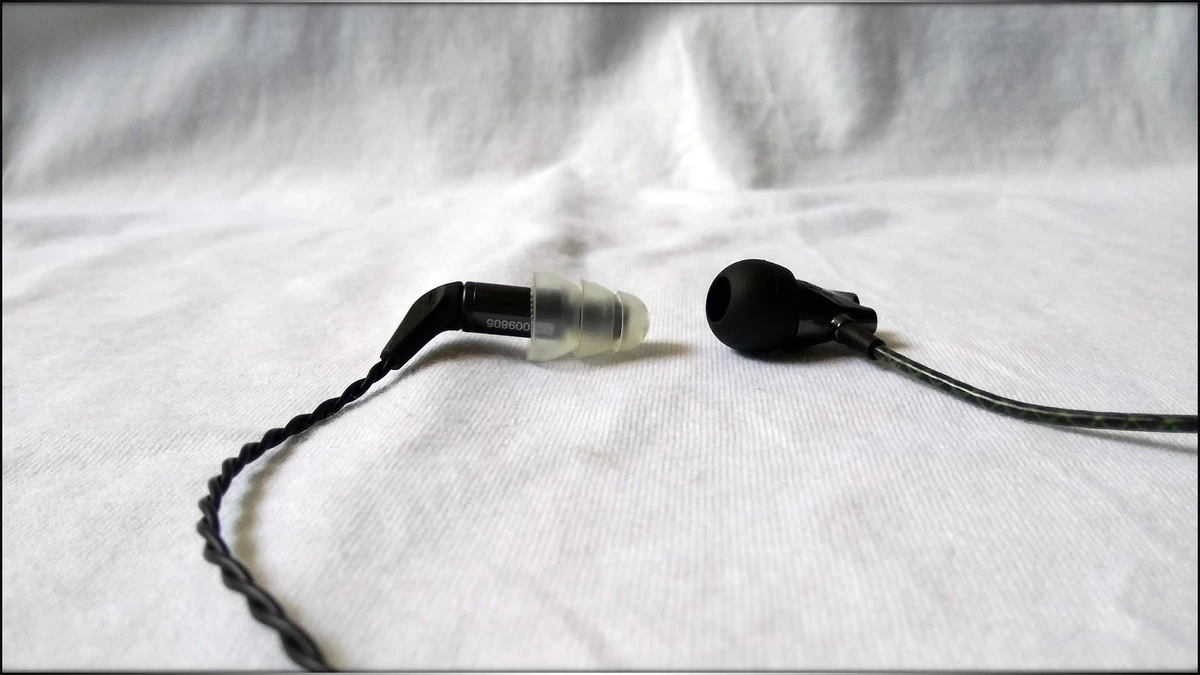
Regardless of whether EQ is applied or not, the instrument separation and definition between instruments is excellent with ER4-XR, the very resolving nature of them being one of the most prominent characteristics of ER4-XR.
There is also a clear sense of space between instruments, and even with the default presentation of ER4-XR being intimate, the instruments have enough air to breathe and don’t feel constrained, but rather are presented as entities of their own in a very well-defined space.
ADSR/PRaT
Etymotic ER4-XR has excellent ADSR (Attack Sustain Decay Release) and PRaT (Pace Rhythm and Timing) characteristics, the rather quick and light nature of their BA drivers allowing an excellent performance when it comes to presenting every musical note the way it would sound in reality.
Some musical notes might feel as if they are presented very quickly, especially if compared to IEMs or Headphones that feature a slower driver, and at times, ER4-XR might feel like one of the quickest IEMs out there, but the perceived speed doesn’t have a negative impact on any type of music, instead, providing a very precise presentation, comparable to high-end speakers and Headphones, along with a musical way for every note. This is good especially for voices and for voice-drive music, since with the quick driver, many voices sound very natural and have a naturalness and fullness to them that can be missing with slow drivers.
Portable Usage
ER4-XR has an excellent portable usage, being one of the rather light and comfortable IEMs I used. Etymotic even includes a shirt clip, in case the cable or the Y-split feels to heavy, and the general comfort while walking (or even dancing) is very good. Due to their deep-fit design, Etymotic ER4-XR will never fall out of one’s ears and they tend to keep their fit through many hours of usage.
One thing that is really different between ER4-XR and many other IEMs is their isolation, which is really high. ER4-XR are probably the best isolating IEMs out there, and it is almost impossible to hear someone, even if they are shouting at you, while wearing ER4-XR. This comes in very handy if trying to listen to music, in a silent space, especially because ER4XR don’t leak sound at all, but this also comes in handy when having to perform live since ER4XR have the almost the level of isolation of a professional custom IEM. On the other hand, I’d recommend caution if walking with ER4-XR since it will be almost impossible to hear things around the lonely walker.
Drive factor
ER4-XR is fairly easy to drive, especially if compared with harder to drive headphones. They are some of the harder to drive IEMs, having a low SPL, and a somewhat high impedance, but they should be drive-able from almost any portable source, starting with Shanling M2s, Hidizs AP200, HiFiMAN Megamini, FiiO x5ii, Opus #3, iBasso DX200, Opus #2, iFi iDSD BL, etc.
When tested if they are drive-able from a Xiaomi mi Max, ER4-XR provided interesting results, as the loudness was most surely enough, and the sound was not bad at all, but higher end sources and dedicated DAPs (even Shanling M2s) will provide a much cleaner output, with better bass depth and impact, better dynamics and more layering of the soundstage. Even so, ER4-XR surely works and sounds good from a good smartphone, but like any other IEM, adding a dedicated source with better sonic characteristics will help ER4-XR reach their full potential.
Select pairings
ER4-XR + iBasso DX200 – This is one of the most recommended pairings I have. ER4-XR and DX200 both have a very detailed, fast and neutral character, DX200 enhancing both the detail revealing abilities, and the musicality of ER4-XR. The soundstage is pretty good with this combo, as is the instrument separation.
ER4-XR + iDSD BL – This is another great pairing since iDSD BL has a tad stronger top end and it will provide a bit more life to ER4-XR. iDSD BL also has a very useful 3D button which will give ER4-XR an even more spatial and vibrant sound. iDSD BL also comes with an X-Bass switch that might come in handy for ER4-XR users who want to bump the bass a bit more.
ER4-XR + Opus #2 / Opus #3 – Both Opus DAPs are excellent with ER4-XR as they provide a deep and spatial sound along with a brilliant top end. Opus #3 tends to have a bit more bite up top, while Opus #2 tends to be a bit more musical and natural, but both are excellent DAPs to drive ER4-XR.
ER4-XR + Shanling M2s – This is an intriguing pairing because while M2s is an ultra-portable DAP, it tends to have a pretty dynamic and lively sound, especially considering its price and size. While M2s won’t have the detail enhancement of DX200 or Opus DAPs, it surely has good musicality and gives a bit more spark to the top end of ER4-XR.
EMI
ER4-XR have been tested against almost all types of EMI possible, they have been used under high tension power lines, used right next to a wifi router, and used to multiple devices while music was streaming, but there were no traces of EMI in the sound.
Comparisons
ER4-XR, while priced very sanely, has characteristics that could easily compare even with high-end IEMs, like HiFiMAN RE800, or Oriveti New Primacy, especially because ER4-XR comes with their very revealing signature.
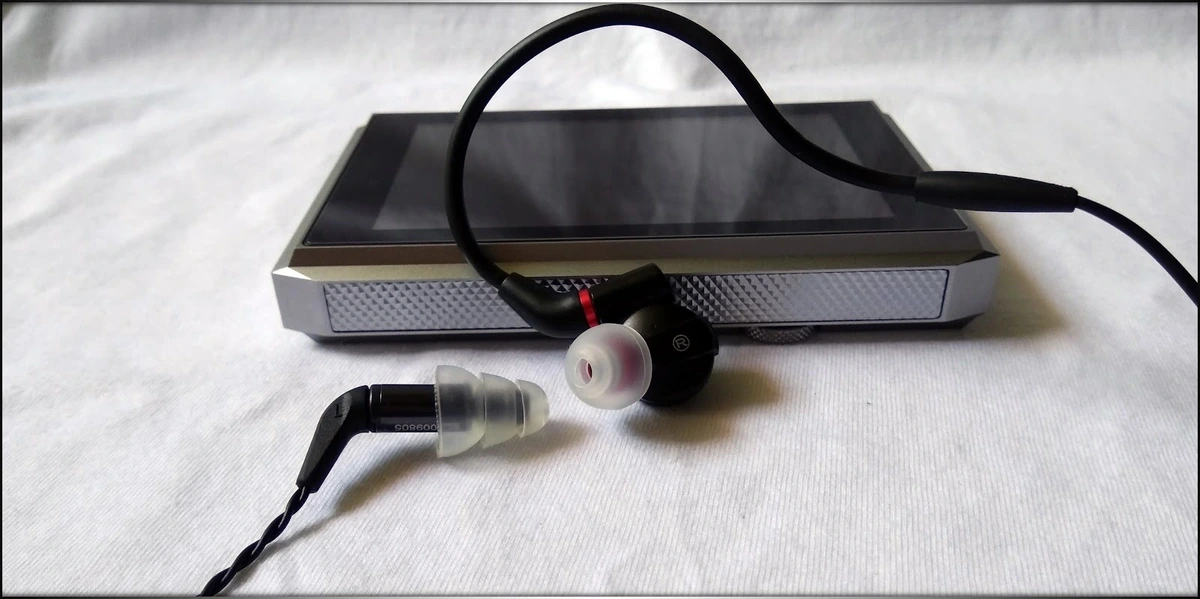
ER4-XR vs Dunu DK-3001 – There is a clear difference in price, DK-3001 costing a bit more, but DK-3001 is still a very budget oriented IEM, so this makes this comparison far more interesting. Starting with the bottom end, ER4-XR has a much tighter bottom end, with a lower amount of bass, DK-3001 providing more bass, more impact and depth. The midrange is quite natural on both, but ER4-XR feels more revealing, while DK-3001 feels more natural and relaxed. The top end is fairly smooth on both DK-3001 and both feature a very good level of treble detail, although DK-3001 is probably smoother while ER4-XR is still closer to a natural / neutral presentation. The ergonomics of both are user-dependent and some users will have a very good fit with each, but it is best to try both ER4-XR and DK-3001 before buying to ensure best results.
ER4-XR vs Oriveti New Primacy – ONP is a newly released IEM that is priced quite similarly to ER4-XR and which provides an excellent sound all-around. Starting with the bass, ONP provides slightly more bass, while ER4-XR goes slightly deeper despite the tighter character their bass have, both being quite quick and providing a good level of detail. ER4-XR is more revealing in the mids, having a more forward midrange, while both ONP and ER4-XR have a fairly natural and honest representation of the midrange. Both are quite musical. On the top end, ER4-XR is smoother and provides a slightly friendlier presentation, being a very good pairing with poor recordings and a more relaxing listen, while ONP can be called more energetic, especially by direct comparison.
ER4-XR vs HiFiMAN RE-800 – Re-800 is priced considerably higher than ER4-XR, but both provide an excellent level of details, while going for polarizing, different signatures. Starting with the bottom end, ER4-XR is tighter, quicker, more precise, while RE-800 has a bit more impact and a slower decay to every bass note, while providing a similar level of depth and detail as ER4-XR. ER4-XR provides a considerably more forward midrange, and RE-800 provides a considerably more forward top end. If compared side-by-side, ER4-XR is smoother, a relaxing listen, while RE-800 is a very healthy energy dealer for those looking for a bit more rush and engagement. ER4-XR is generally more natural and neutral, while RE-800 is geared more towards those who are looking for a V-shaped and a “fun” signature.
ER4-XR vs Kinera H3 – Kinera H3 is considerably less expensive than ER4-XR, but this doesn’t mean that the comparison isn’t fair. When it comes to their sound, I’d say that H3 performs way above their price point, but this comes at the cost of some brightness, H3 being one of brightest IEM I heard to date. This is not something negative as I like bright signatures, but it is good to keep this in mind if you’re sensitive to treble. Starting with the bottom end, both H3 and ER4-XR have very good precision and speed, but ER4-XR is tighter and tends to have a more neutral bass, with quicker response, while H3 has a slightly enhanced bass. When it comes to the midrange, they are more on polarizing ends rather than similar, Kinera H3 being recessed, and ER4-XR being forward in their midrange. The top end is another chapter where they are different, because while Kinera H3 is vibrant, energetic and could be bright for some, ER4-XR is smooth and the top end is rather friendly with every material thrown at it.
ER4-XR vs Sennheiser ie800 – This is a fun comparison because ie800 is the benchmark IEM I have and it has pretty much the closest to my ideal response. Although it is considerably more expensive, I think that ie800 is well worth the asking price, but this is where things get interesting, because ER4-XR has a somewhat similar amount of detail in the mids, being a very resolving IEM. When it comes to the bottom end, both ie800 and ER4-XR have amazing detail retrieval and precision, but ie800 has a considerably more enhanced bottom end with considerably more impact, while ER4-XR is quite neutral, tight and precise in their bottom end response. When it comes to the midrange, ie800 has a somewhat recessed midrange, especially when compared with the very forward presentation of ER4-XR. The top end is smoother on ER4-XR, while it is enhanced on ie800, ie800 being quite V-shaped while ER4-XR is quite neutral / flat in its response.
ER4-XR vs Beyerdynamic Xelento – This comparison is already a bit unfair since we’re Xelento and ER4-XR are in very different price brackets, but it is interesting to see how ER4-XR performs when compared to another smooth TOTL IEM. Starting with the bottom end, Xelento has a fuller bottom end, with more depth and impact while ER4-XR has a tight bottom end with precision and lightweight attack. The midrange is forward on both Xelento and ER4-XR, but it has a bit more aggressiveness on Xelento, while it has a more solid character on ER4-XR. The top end is smoother on ER4-XR, but Xelento is pretty smooth as well, both being quite friendly with the music they are playing. All in all,
Value
Etymotic ER4-XR retails for about 400$ in Europe, give or take, and at this price it is a very interesting offer. The package feels very professional and complete, and the sound could easily compete with IEMs from the 700$ – 800$ price range, when it comes to detail, precision and general revealing abilities of ER4-XR. The package includes everything one might need to be able to enjoy ER4-XR out of the box, ER4-XR has detachable cables, and there is a lot of testing and Q&A going on at Etymotic, ensuring that L and R sides are well matched and that you’re receiving a complete and well working package.
ER4-XR can only use the tips it comes with, having very thin nozzles, but the box includes both foam and silicone tips. They require specific filters, which also have spare sets included in the retail package.
The carrying case and the well-made cable also add to the value of the whole package when ordering ER4-XR.
Conclusion
Etymotic ER4-XR is surely an interesting IEM and a very nice take on the IEM market, being both a precision tool, and a nice IEM to help one enjoy their music. The sound is flat, natural, mid-forward, solid and it is extremely resolving. One could say that it will please many who are seeking the sweet guitar riffs and voices as they are played by ER4-XR, but it should be noted that the bass and the treble will have less energy than the midrange, even though they have very good detailing and precision as well.
If there is one thing one has to wonder about when it comes to ER4-XR, it probably is the fit, which is a deep-insertion fit, and this will be quite personal, everyone having a different ear shape. I can only say that ER4-XR works very well for me, and I can easily recommend them, but it would be best to test ER4-XR before ordering, if you want to make sure of how they’ll fit for you.
All in all, at their rather friendly price point, it is easy to recommend ER4-XR to both music enthusiasts, music lovers and to performing artists who are looking for the utmost precision, delicate detail and fine musicality in their music. With an excellent isolation and a professional sound, ER4-XR will surely impress anyone who hears their magical midrange for the first time.
Thank you for reading! I hope that this review is of help to you! Stay safe, and please remember to have fun while listening to music!
--- Please remember to stay safe, and always have fun while listening to music!---
- If you have a dime to spare, please donate, and help us! It would make the day brighter for me and my wife-
Full Playlist used for this review
We listened to more songs than those named in this playlist, but those are excellent for identifying a sonic signature. I recommend trying most of the songs from this playlist, especially if you’re searching for new music! The playlists are different for Spotify, Tidal and Youtube, and based on the songs I enjoy and are available on each!
https://www.youtube.com/playlist?list=PL_cjBXGmwSHSdGcwuc_bKbBDGHL4QvYBu
https://open.spotify.com/playlist/5J3oloz8Riy9LxEGenOjQ0?si=979ba4f082414be7
https://tidal.com/browse/playlist/330fd544-8e5b-4839-bd35-676b2edbb3d5
--- Contact Us ---






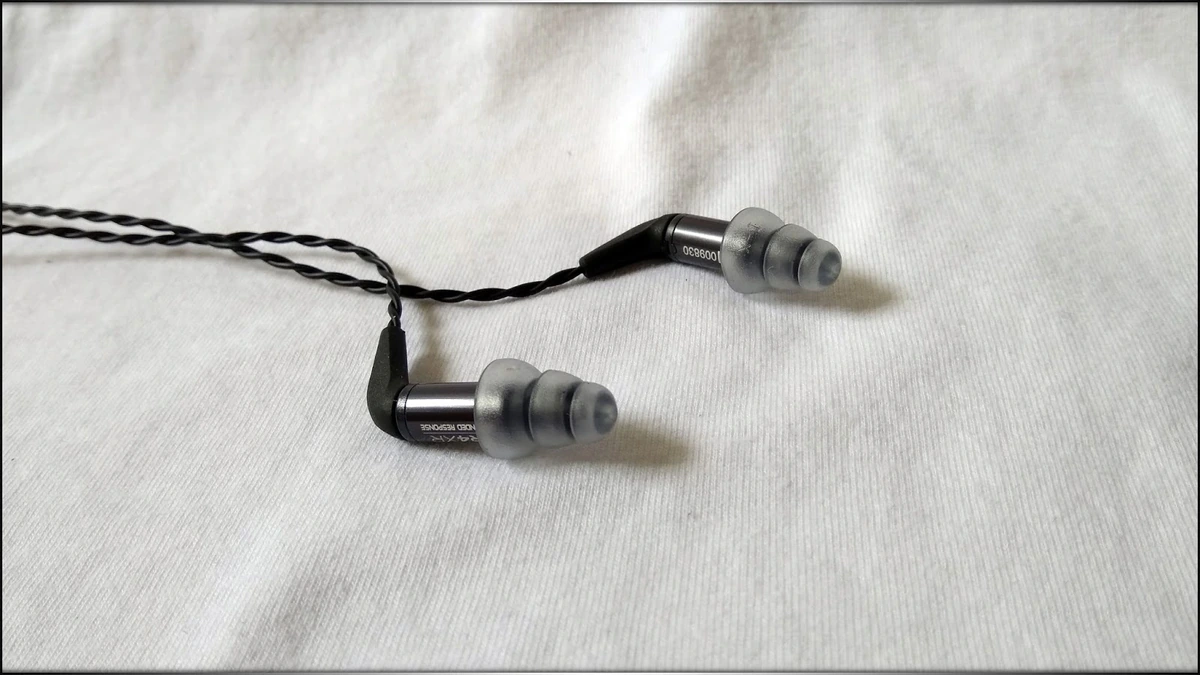


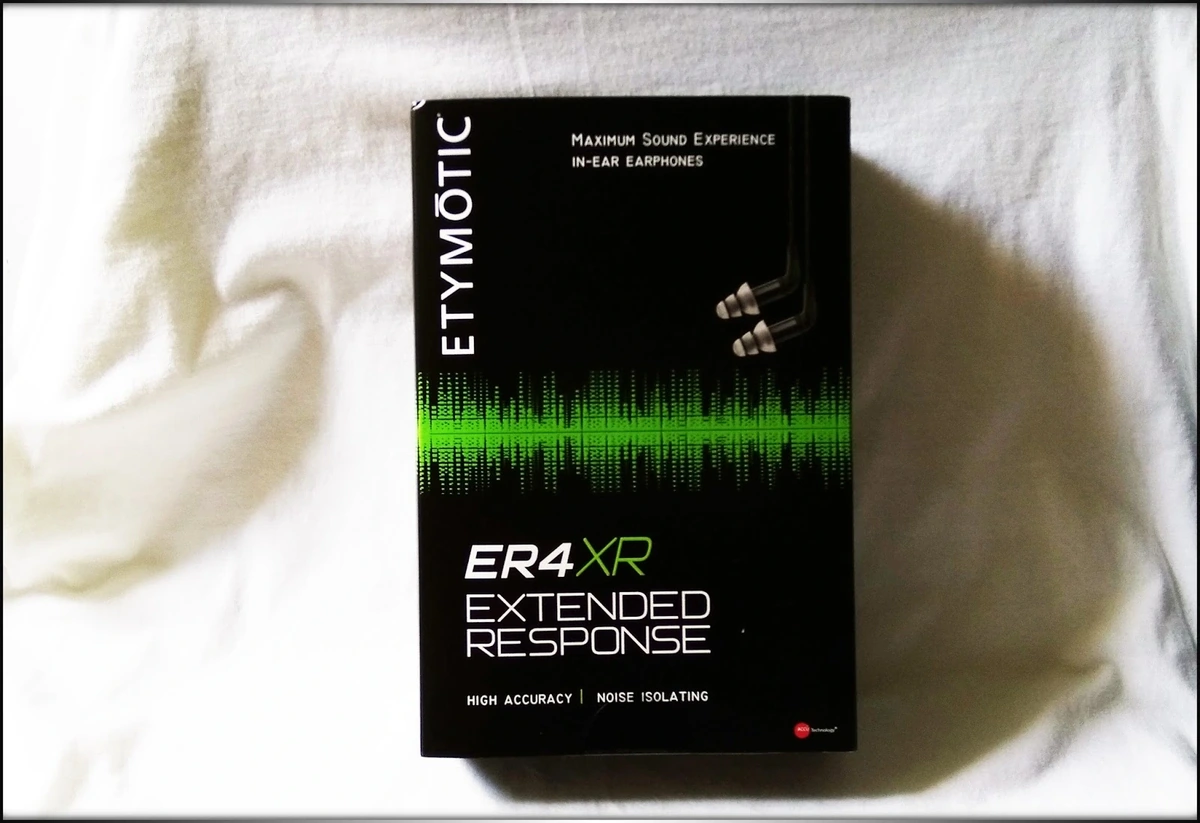


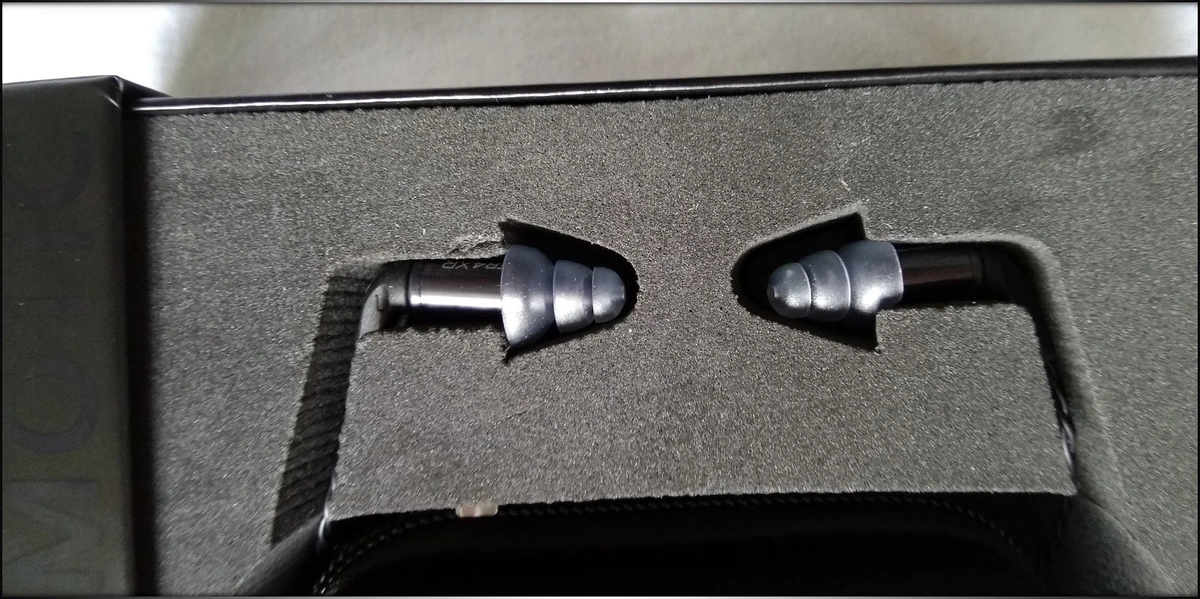
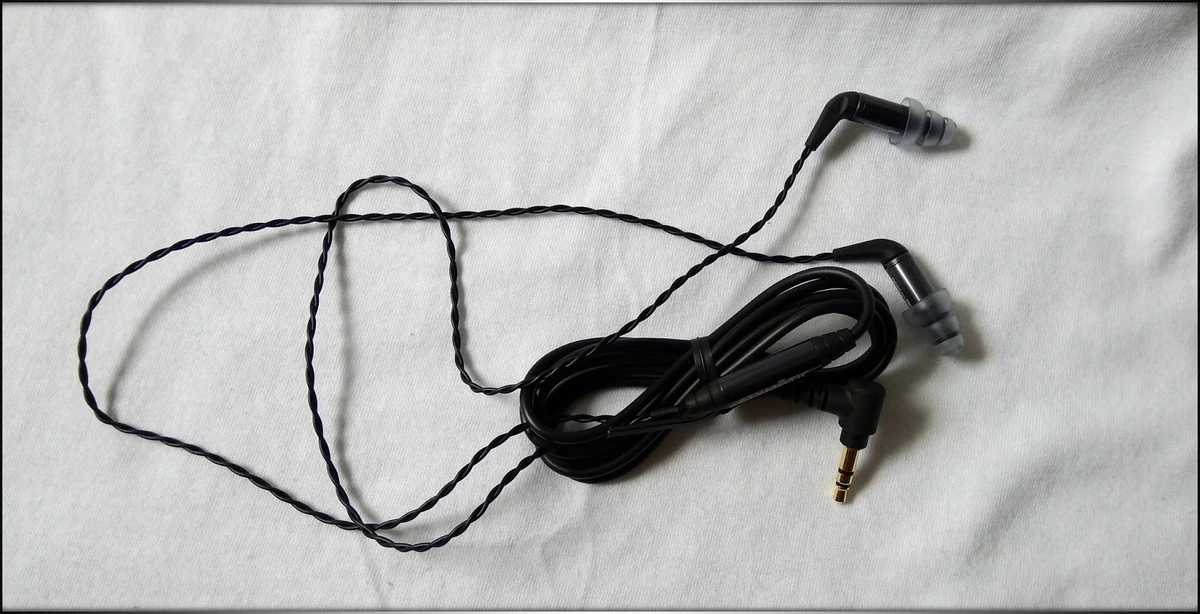

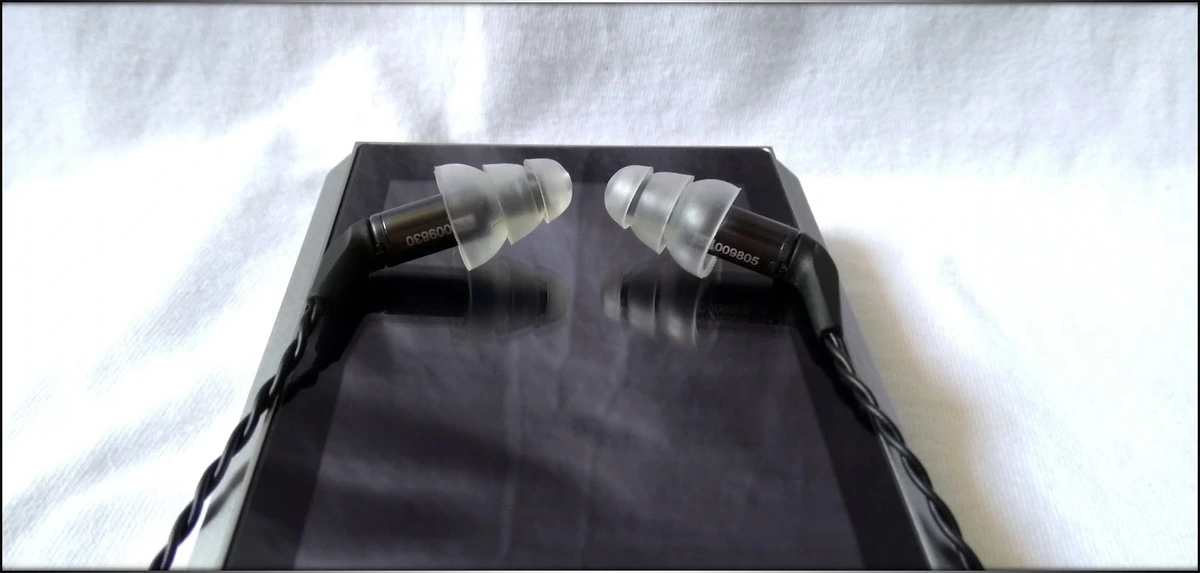

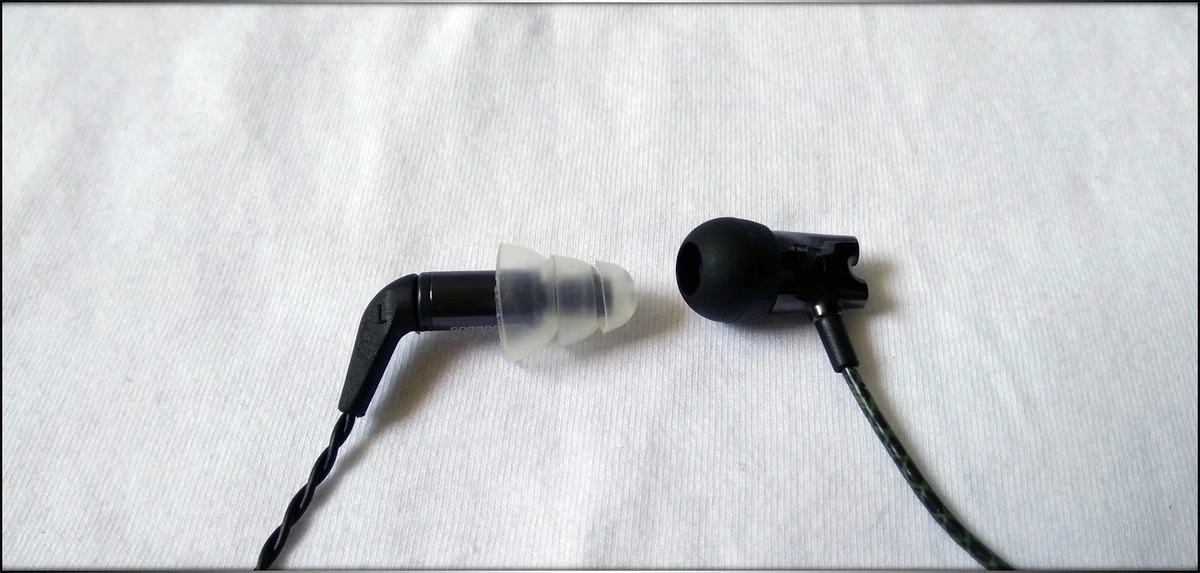
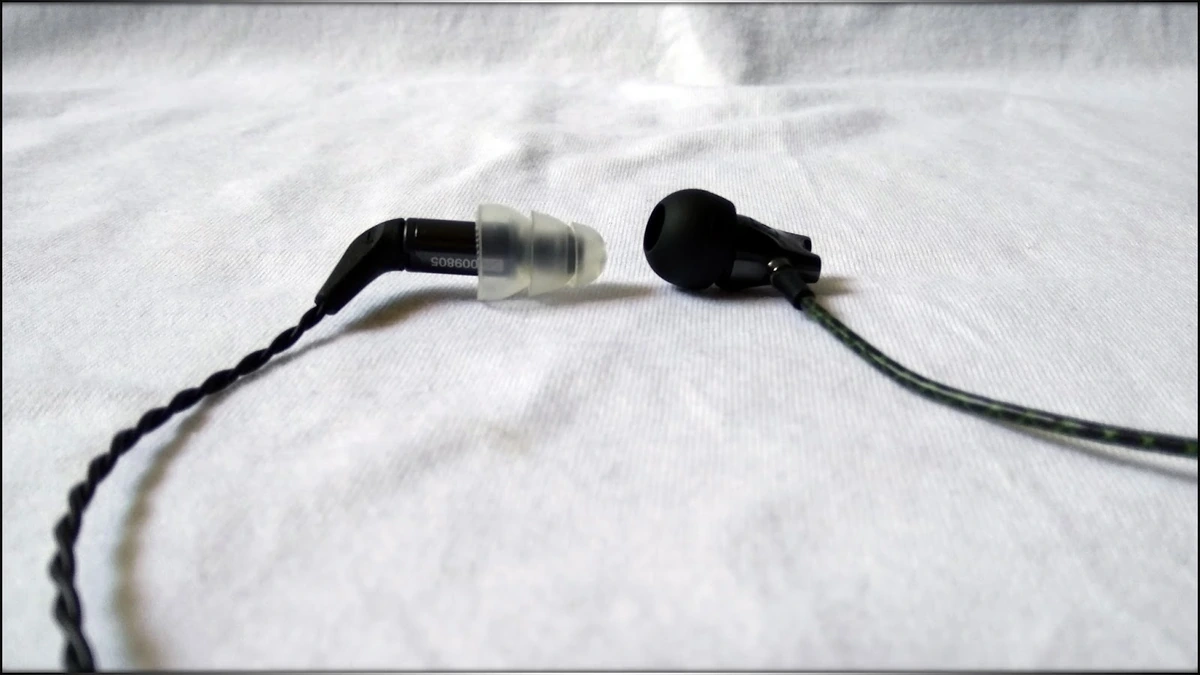






[…] vs Etymotic ER4XR – We feel we should make this comparison because HEM8 has a really similar signature to […]